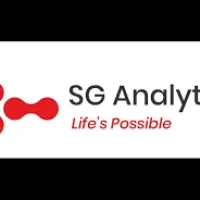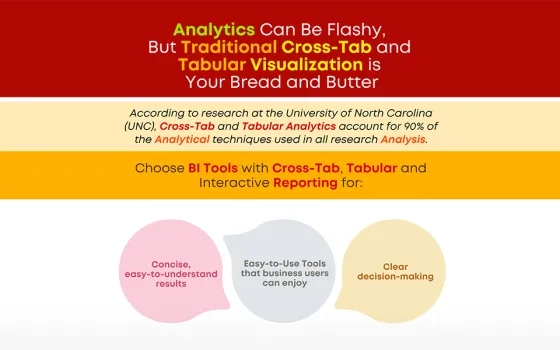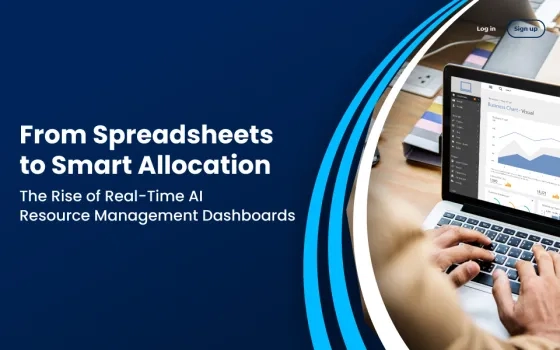Predictive analytics necessitates the clever application of tech and statistics skills. Analysts will often utilize historical data models to help companies forecast market trends. For this purpose, they develop or procure machine learning (ML) techniques. As a result, companies can secure various competitive advantages.
Insights into future outcomes assist business owners in leading their enterprises with an informed decision-making process geared toward general improvement. This post will examine the way predictive analytics works and the use of related software skills in forecasting market trends.
Understanding Predictive Analytics
Predictive analytics is a process in which the analysis of historical data helps analysts pursue recurring patterns. Later, they leverage the same to forecast other outcomes. It concerns statistical means like regression and time series analysis. Moreover, modern predictive analytics services embrace versatile ML modeling strategies. That is why corporations employing them can reliably predict trends in future market conditions.
On a related note, prescriptive analytics and artificial intelligence tools can generate risk mitigation ideas. They augment predictive analysis by natively integrating problem-solving capabilities. Besides, these tech advancements help businesses plan ahead by considering and responding to customers’ reactions.
All brands wanting to make accurate guesses about the future demand and price fluctuation in the market seek experienced analysts to lead forecasting efforts. These professionals must also hone their skills and harmoniously combine the strengths of data mining, statistical modeling, and machine learning.
Essential Tip: Computer-aided predictions, scenario analyses, and risk prevention recommendations are not absolute statements. At the end of the day, you must acquire enough experience to discern the reliability of each predictive insight. Alternatively, seek expert advice and invest in employee skill development in that direction.
Software Tools for Predictive Analytics and Market Trends
There are many software applications that developers have designed to enable a company to implement ML-enhanced data analysis strategies. Global market research services rely on them to forecast potential trends and boost efficiencies across predictive analytics. They all offer a host of features that make decoding demand-supply possibilities quick yet more precise.
Consider the following technology platforms to upgrade how you tap into scenario-based ideation and risk management.
1. IBM SPSS Modeler supports structured as well as unstructured data. Its features allow brands to identify trends, patterns, and risks for a business.
2. SAS Advanced Analytics is a series of analytics packages that cover all tools associated with data analysis, including predictive modeling, machine learning, and forecasting. It is primarily used in analyzing big data analytics in the finance and health sectors.
3. RapidMiner offers well-optimized data mining, machine learning, and deep learning. It is very popular in business systems due to its broad range of tools and ability to integrate with other system products.
4. Although primarily a data visualization software, Tableau also supports predictive analytics, and its users can make models for forecasting trends and visualizing outcomes. Analysts in every industry use it to serve clients’ business intelligence and reporting needs.
The Use Cases of Predictive Analytics to Forecast Market Trends in Different Industries
Predictive analytics may be applied to any industry. However, every enterprise expects it to achieve something distinct. For example, organizations can utilize it as a risk management tool in financial services or a demand forecasting mechanism. Scenario analysis is also an excellent innovation catalyst for new product creation. A few examples described below show how predictive analytics is changing industries.
1. Risk Management in Finance and Banking
Predictive analytics is frequently used in the financial sector for risk management. Such institutions bank on it to measure credit risk, identify fraud, and handle investment portfolios. Analyzing historical transaction data and the behavior of a customer lets banks predict how likely a person is to default on a loan. As a result, they can take preemptive action early on.
In addition, predictive models detect suspicious activities. They consistently aid financial institutions in avoiding fraud.
Research has proven that predictive data models are vital to improving the resilience of the financial sector in terms of multifaceted risk management. Consider the work by Jianqiang and Wang (2017). They have highlighted how algorithms based on machine learning technology enhance the accuracy of credit scoring models. In short, they reduce the risk of bad loans while improving profitability for financial institutions.
2. Demand Forecasting in Retail
Predictive analytics plays an important role in demand forecasting and helps the retail industry. After all, retailers have adequate lead time. It is the time required to anticipate future demand based on historical sales insights and customer or market preferences. Relate retail analytics tools help businesses optimize inventory levels. Retailers can avoid overstocking. They also utilize relevant insights to prioritize increasing customer satisfaction and overall operational effectiveness.
For instance, Amazon has been using predictive analytics to forecast demand while managing some oversupply of its stocks. Therefore, in-demand products are ready for shipping at the right time for the right consumer base. This approach has contributed to the progress of this eCommerce company as a large-scale, global enterprise excelling at great customer service.
3. Formulating How Products Get Designed and Tested
The manufacturing industry uses predictive analytics to innovate products with the help of trend identification within the market. Furthermore, there can be demand gap discovery insights involving the manufacturer’s customers.
By looking at the customer’s sentiments, buying behaviors, and market conditions, companies come up with new ways of designing new products or upgrading the old. It allows manufacturers to optimize processes in the production line. Newer strategies also assist in reducing potential downtime. For this purpose, the prediction of equipment failure and scheduling preventive maintenance might be quintessential.
Kumar and Mishra’s study in 2020 was a good example of the opportunities that predictive analytics can bring to the sphere of manufacturing efficiency and innovation. Whether manufacturers can stay ahead of the market curve through continuous innovation was proven with data-driven insights.
4. Predictive Analytics in Marketing Customer Behavior
Marketing departments also use predictive analytics to predict customer behavior in advance. They can enhance the design methods for their campaigns. ML models will provide them with adequate ideas by considering the specific needs of the client or all marketing platforms’ preferred experiences.
Customers’ browsing history, purchasing patterns, and demographics reveal much about what that customer is likely to buy. Therefore, marketers can predict sales and prepare the minute details accordingly. This approach increases customer engagement and brings a better conversion rate.
Predictive analytics also allows customers to be segmented based on each criterion. That is why analysts can enable their employers or clients to focus on high-value customers. Individuality-driven offer creation also becomes straightforward. Shmueli et al. (2016) did a literature survey that demonstrated predictive models enhance the effectiveness of customer segmentation and marketing ad spending.
Conclusion
Predictive analytics is a vital tool for market trend forecasting. After all, it allows businesses in general to make informed and data-driven decisions that improve performance. Consequently, leaders can effectively manage risk and encourage innovation.
Applied with the right software, such as IBM SPSS Modeler or SAS Advanced Analytics, skilled professionals can take it to its full potential.
It has been and will be used across varied industries, including finance and retail. Predictive analytics helps everyone access reliable demand forecasts and risk management ideas. Besides, it accelerates innovation in products. Further research into predictive analytics’ effectiveness will determine its value and business strategy.















